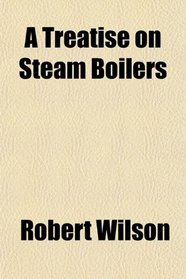Search -
A Treatise on Steam Boilers
A Treatise on Steam Boilers
Author:
Purchase of this book includes free trial access to www.million-books.com where you can read more than a million books for free. This is an OCR edition with typos. Excerpt from book: CHAPTER III. PROPERTIES AND CHARACTER OF BOILER MATERIALS. CAST IRON. Cast Iron is the name given to a material, whose physical properties may vary through... more »
Author:
Purchase of this book includes free trial access to www.million-books.com where you can read more than a million books for free. This is an OCR edition with typos. Excerpt from book: CHAPTER III. PROPERTIES AND CHARACTER OF BOILER MATERIALS. CAST IRON. Cast Iron is the name given to a material, whose physical properties may vary through... more »
ISBN-13: 9780217672481
ISBN-10: 0217672485
Publication Date: 8/16/2009
Pages: 274
Rating: ?
ISBN-10: 0217672485
Publication Date: 8/16/2009
Pages: 274
Rating: ?
0 stars, based on 0 rating
Publisher: General Books LLC
Book Type: Paperback
Other Versions: Hardcover
Members Wishing: 0
Reviews: Amazon | Write a Review
Book Type: Paperback
Other Versions: Hardcover
Members Wishing: 0
Reviews: Amazon | Write a Review




